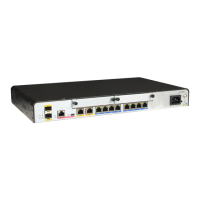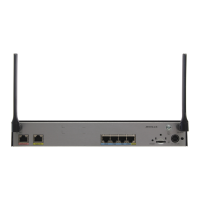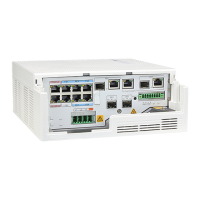3.3.1 Establishing the Configuration Task
Before configuring a VPN instance enabled with an IPv4 address family, familiarize yourself
with the applicable environment, complete the pre-configuration tasks, and obtain the data
required for the configuration. This will help you complete the configuration task quickly and
accurately.
Applicable Environment
In BGP/MPLS IP VPN, each VPN is instantiated, and the instances of private forwarding
information of each VPN are established, that is, a VPN instance is established. A VPN instance
is also called the VPN Routing and Forwarding (VRF) table. In RFC 4364 (BGP/MPLS IP
VPNs), a VPN instance is called the per-site forwarding table.
The VPN instance is used to separate the VPN routes from public routes. In all the BGP/MPLS
IP VPN networking scenarios, configure VPN instances.
The VPN instance IPv4 address family can realize the separation of address spaces based on the
Router Distinguisher (RD), and can control VPN membership and routing rules based on the
VPN target attribute.
In addition, to achieve enhanced routing control, you can also enforce inbound and outbound
routing policies. The inbound routing policy is used to filter the routes imported into the VPN
instance IPv4 address family, and the outbound routing policy is used to filter the routes
advertised to other PEs.
Pre-configuration Tasks
Before configuring a VPN instance enabled with an IPv4 address family, complete the following
tasks:
l Configuring routing policies if import or export routing policies need to be applied to the
VPN instance IPv4 address family
l Configuring tunnel policies if load balancing is required, or the default selecting sequence
of Label Switched Paths (LSPs), Multiprotocol Label Switching Traffic Engineering
(MPLS TE) tunnels, or Generic Routing Encapsulation (GRE) tunnels need to be changed.
Data Preparation
To configure a VPN instance enabled with an IPv4 address family, you need the following data.
No.
Data
1 Name of the VPN instance
2 (Optional) Description of the VPN instance
3 RD, VPN target attribute of the VPN instance IPv4 address families
4 (Optional) Maximum number of routes allowed by the VPN instance IPv4 address
families
5 (Optional) Routing policy that controls the receiving and sending of VPN routes
Huawei AR1200 Series Enterprise Routers
Configuration Guide - VPN 3 BGP MPLS IP VPN Configuration
Issue 01 (2012-04-20) Huawei Proprietary and Confidential
Copyright © Huawei Technologies Co., Ltd.
65

